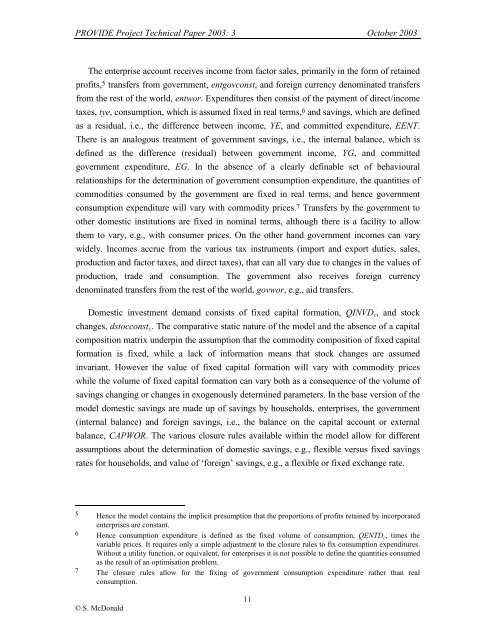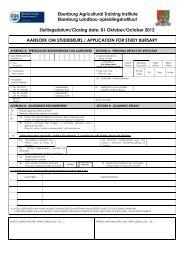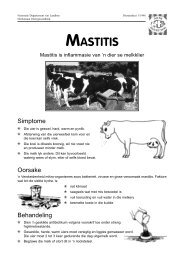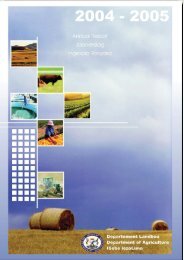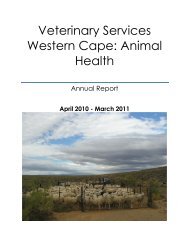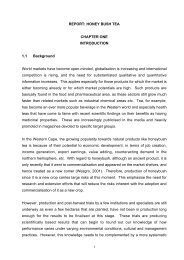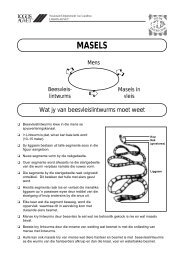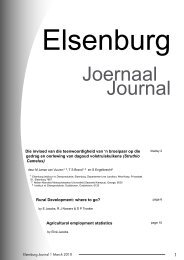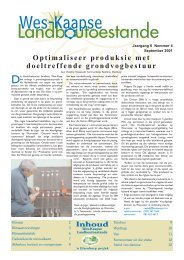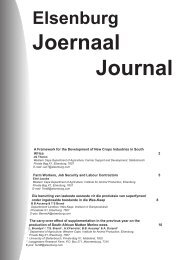The PROVIDE Project Standard Computable General Equilibrium ...
The PROVIDE Project Standard Computable General Equilibrium ...
The PROVIDE Project Standard Computable General Equilibrium ...
You also want an ePaper? Increase the reach of your titles
YUMPU automatically turns print PDFs into web optimized ePapers that Google loves.
<strong>PROVIDE</strong> <strong>Project</strong> Technical Paper 2003: 3 October 2003<br />
<strong>The</strong> enterprise account receives income from factor sales, primarily in the form of retained<br />
profits, 5 transfers from government, entgovconst, and foreign currency denominated transfers<br />
from the rest of the world, entwor. Expenditures then consist of the payment of direct/income<br />
taxes, tye, consumption, which is assumed fixed in real terms, 6 and savings, which are defined<br />
as a residual, i.e., the difference between income, YE, and committed expenditure, EENT.<br />
<strong>The</strong>re is an analogous treatment of government savings, i.e., the internal balance, which is<br />
defined as the difference (residual) between government income, YG, and committed<br />
government expenditure, EG. In the absence of a clearly definable set of behavioural<br />
relationships for the determination of government consumption expenditure, the quantities of<br />
commodities consumed by the government are fixed in real terms, and hence government<br />
consumption expenditure will vary with commodity prices. 7 Transfers by the government to<br />
other domestic institutions are fixed in nominal terms, although there is a facility to allow<br />
them to vary, e.g., with consumer prices. On the other hand government incomes can vary<br />
widely. Incomes accrue from the various tax instruments (import and export duties, sales,<br />
production and factor taxes, and direct taxes), that can all vary due to changes in the values of<br />
production, trade and consumption. <strong>The</strong> government also receives foreign currency<br />
denominated transfers from the rest of the world, govwor, e.g., aid transfers.<br />
Domestic investment demand consists of fixed capital formation, QINVD c , and stock<br />
changes, dstocconst c . <strong>The</strong> comparative static nature of the model and the absence of a capital<br />
composition matrix underpin the assumption that the commodity composition of fixed capital<br />
formation is fixed, while a lack of information means that stock changes are assumed<br />
invariant. However the value of fixed capital formation will vary with commodity prices<br />
while the volume of fixed capital formation can vary both as a consequence of the volume of<br />
savings changing or changes in exogenously determined parameters. In the base version of the<br />
model domestic savings are made up of savings by households, enterprises, the government<br />
(internal balance) and foreign savings, i.e., the balance on the capital account or external<br />
balance, CAPWOR. <strong>The</strong> various closure rules available within the model allow for different<br />
assumptions about the determination of domestic savings, e.g., flexible versus fixed savings<br />
rates for households, and value of ‘foreign’ savings, e.g., a flexible or fixed exchange rate.<br />
5 Hence the model contains the implicit presumption that the proportions of profits retained by incorporated<br />
enterprises are constant.<br />
6 Hence consumption expenditure is defined as the fixed volume of consumption, QENTD c , times the<br />
variable prices. It requires only a simple adjustment to the closure rules to fix consumption expenditures.<br />
Without a utility function, or equivalent, for enterprises it is not possible to define the quantities consumed<br />
as the result of an optimisation problem.<br />
7 <strong>The</strong> closure rules allow for the fixing of government consumption expenditure rather than real<br />
consumption.<br />
© S. McDonald<br />
11


